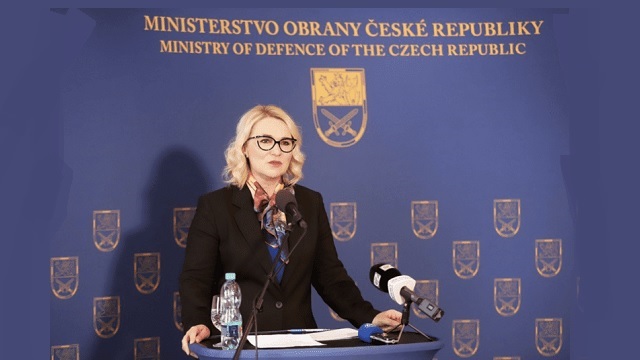By James D. Agresti
The average cost of private schools is a vital fact for understanding issues like school choice and public school spending. This is because it provides a market-based comparison to the cost of government schools. Yet, the U.S. Department of Education hasn’t published an estimate for the average cost of private K–12 schools since 1995.
To fill this decades-long gap, Just Facts conducted extensive research to develop a methodology that reliably measures private school spending. Beyond analyzing academic papers and government reports, Just Facts performed data checks and corresponded with the Department of Education and the U.S. Bureau of Economic Analysis to ensure accuracy.
Applying this method to the latest available data, the average inflation-adjusted cost of private K–12 schools in the 2019–20 school year was $9,709 per student. In contrast, the cost for public schools was $17,013 per student—or 75% more than private schools.
Public schools have a disproportionate number of students with disabilities, who cost more to educate than other students. Accounting for this difference, the average cost of educating children in public schools is now 58% greater than in private schools.
However, the cost premium of public schools is almost certainly larger than 58%. This is because government data on public school spending excludes some key items.
Coupled with data on student outcomes, these findings have major implications for the state of the public education system and how to improve it.
Historical Data
In a 1995 working paper, the Department of Education (DOE) estimated that “total expenditures for private schools in 1991–92 (including operating expenses and capital) were between $18.0 and $19.4 billion,” and the cost per student was “between $3,350 and $3,600.”
For the same school year, the DOE reported that public schools spent an average of $5,626 per student.
Comparing those figures, the average cost of public school education in 1991–92 was about 56–68% more than private school.
Since then, the DOE has published the average full tuition for private K–12 schools in 2011–12, but there is a significant difference between this figure and actual costs. That’s because full tuition, or the “sticker price,” is “the highest annual tuition charged for a full-time student.” The actual amounts paid by individuals are often much lower because they receive discounts for reasons such as having low income, siblings in the school, or a parent who is a teacher.
Since 1992, inflation-adjusted average public school spending per student has risen by 47%, and the DOE hasn’t published new data on private school spending. Thus, a fresh comparison of the cost differential between public and private schools is needed.
Just Facts’ Methodology
To determine the cost of private schools, Just Facts measures all income to them, including tuition payments, charitable donations, and government spending on private school programs. This is accomplished by summing federal data on:
All of the data and calculations are available in this spreadsheet. The bottom line result is that the average inflation-adjusted cost of private K–12 education in the 2019–20 school year was $9,709 per student.
This compares to the DOE’s figure of $17,013/student for public schools—or 75% more than private schools.
Incidentally, 75% isn’t far from the DOE’s estimate of a 56–68% cost premium for public schools in the 1991–92 school year.
Beyond that gut-level check, Just Facts corresponded with federal agencies, analyzed academic publications, and tested its methodology by using it to calculate total expenditures for private schools in the same 1991–92 school year that the DOE examined. This yielded a figure of $16.2 billion, or 10–16% lower than the DOE’s estimate of $18.0 to $19.4 billion.
The 10–16% differential accords with the following statement from the DOE’s working paper: “We would be surprised if improved data changed our overall estimate of total expenditures on private education by more than perhaps 10 or 15%.”
Some of the stated shortcomings of the DOE paper’s methodology are as follows:
- “The main area of concern in the data for Catholic elementary and secondary schools is the response rate: each had a response rate far below 100%. (The response rate for the elementary survey was just above 50%, and for the secondary survey it was about 57%.)”
- “In addition, our use of region as a proxy for geographic variation may be somewhat crude.”
- “The principal caveat that needs to be attached to our estimates is that we are uncertain about the specific expenditures school officials included in their responses to the survey items we relied on in our analysis.”
- “Nor do we know whether most schools responded to the survey items on the basis of a formal school budget or on the basis of less formal materials.”
Students with Disabilities
Per-pupil spending on students with disabilities is roughly 1.9 times that of typical students. Because a disproportionate share of students with disabilities are enrolled in regular public schools, this increases public school spending relative to private schools.
In 2019–20, students with disabilities comprised 1% of students in regular private schools and 14% of students in regular public schools. After adjusting for this difference, the 75% cost premium for public schools declines to 58%.
Unmeasured Costs
The cost premium for public schools is likely greater than 58% because the DOE’s data on public school spending doesn’t account for certain expenses. These include:
- state government spending on administration.
- the unfunded liabilities of pensions for government employees.
- the costs of post-employment non-pension benefits (like health insurance) for government employees.
Such costs are common in public schools and rare in private ones.
The State of Public Education
The performance of schools has major consequences for the well-being of children, as well as the fabric of the nation. The father of the U.S. public education system, Horace Mann, was profoundly aware of these stakes but failed to foresee how his vision would unfold. In 1841, he declared that public schools were “the greatest discovery ever made by man,” and if they were “worked with the efficiency” of which they were capable:
nine-tenths of the crimes in the penal code would become obsolete; the long catalogue of human ills would be abridged; men would walk more safely by day; every pillow would be more inviolable by night; property, life, and character held by a stronger tenure; all rational hopes respecting the future brightened.
Reality has played out very differently than Mann predicted. Even though inflation-adjusted spending per public school student has risen by about 43 times since 1885, public schools are now spending an average of $343,663 per classroom per year:
- only 37% of U.S. residents aged 16 and older can correctly answer a question that requires basic logic, addition, and division.
- only 22% of the college-bound high school students who take the ACT exam meet its college readiness benchmarks in all four subjects (English, reading, math, and science).
- two-thirds to three-quarters of all young adults in the U.S. are unqualified for military service because of poor physical fitness, weak educational skills, illegal drug use, medical conditions, or criminal records.
- the drug overdose death rate has quintupled since 2000, and if it remains at the current level, one in every 40 people in the U.S. will ultimately die of a drug overdose.
- 15-year-old U.S. students rank 31st among 37 developed nations in math, even though the U.S. spends an average of 38% more per K-12 student than other developed nations.
Public schools cannot be logically blamed for the entirety of this ruin because many other factors may be involved. However, public schools play a role—and often a major one—in all of these outcomes. Hence, there is clearly room for improvement.
Competition & School Choice
One of the most effective and time-tested ways to improve products and services is competition. Explaining why this is so, the textbook Economics: Private and Public Choice states:
Competition is a disciplining force for both buyers and sellers. In a competitive environment, producers must provide goods at a low cost and serve the interests of consumers; if they don’t, other suppliers will. … This process leads to improved products and production methods and directs resources toward projects that create more value. It is a powerful stimulus for economic progress.
In accord with that principle, numerous academic papers provide evidence of the benefits of competition in wide-ranging industries.
Likewise, the academic serial work Handbook of Research on School Choice states:
Much of the debate over school choice is based on the premise that there is a public monopoly over the provision of schooling and that schools are inefficient, in part, because of the absence of competition. If families could be treated as consumers and had the right to freely choose which kind of education they would prefer for their children, choice advocates assert that both government and non-government schools would improve….
Based on anecdotes, some people claim that competition doesn’t work in the sphere of education, but comprehensive facts like the following show that it does:
- At least 22 high-quality studies have been performed on the academic outcomes of students who remain in public schools that are subject to school choice programs. All but one found neutral-to-positive results, and none found negative results.
- A gold-standard experimental study published by the Quarterly Journal of Economics in 2011 found that high-risk male youth who won a school choice lottery in Charlotte-Mecklenburg, North Carolina “commit about 50% less crime across several different outcome measures and scalings of crime by severity.”
- Among 23 experimental (or quasi-experimental) studies that have been conducted on the academic outcomes of students who experience school choice:
- 13 found statistically significant positive effects.
- 6 found no statistically significant effects.
- 3 found statistically significant negative effects.
The Money Drainage Myth
While ignoring all evidence on the benefits of school choice, teachers unions and politicians like Bernie Sanders argue that school choice harms public schools by draining funds from them. The polar opposite is true.
Private school choice generally increases public school funding per student, which is the primary measure of education funding. As explained by Stephen Cornman, a statistician with the DOE’s National Center for Education Statistics, per-pupil spending is “the gold standard in school finance.”
That’s why a school with only 1,000 students would be better funded than a school with 2,000 students if they both received the same total funding. It’s the funding per student that matters, not the funding per school.
Private school choice boosts per-pupil funding in public schools because the public schools no longer educate the students who go to private schools—which spend much less per student than public schools. This leaves additional funding for the students who remain in public schools.
For each non-disabled public school student who moves to a private school, the cost to educate her declines from an average of about $16,000/year to $10,000. This leaves an extra $6,000 in funds for the public school to spend on the remaining students. The savings can be even greater if the law caps the amount of money for private schools to less than $10,000.
What about the costs of students who are already enrolled in private schools? School choice initiatives are typically designed to help children whose parents can’t afford private school. Thus, school choice laws often target benefits to such families and limit benefits for richer households. Even though some of the benefits go to students who are already in private schools, the net result has been that most school choice programs save money. This can be used to increase funding per student in public schools.
Certain school costs (like building maintenance) are fixed in the short term. Thus, the savings of educating fewer students occurs in steps. This means that school choice can temporarily decrease the funding per student in some public schools, but this is brief and slight because only 8% of public school spending is for operations and maintenance.
Tax & Debt Implications
Instead of increasing per-student funding for public schools, the money saved through school choice could be used to reduce taxes or pay down government debt.
In 2021, federal, state, and local governments spent $745 billion on K–12 education, costing every household in the U.S. an average of $5,764. Over the average U.S. lifespan of 76 years, this amounts to $438,000 per household.
Because the average cost of educating children in public schools is now 58% greater than in private schools, taxes, and debt could be significantly reduced by allowing parents to put their children in schools that cost less and provide better education.
Conclusion
Compared to private schools, public schools are costly and ineffective. An array of facts indicates that this situation—which poses a dire threat to the entire nation—can be improved by competition from school choice.
Although choice could help students, parents, and taxpayers, it would harm teachers’ unions by depriving them of dues and power. This is because private schools are less likely to have unions than public ones.
In turn, this financially harms Democratic politicians, political action committees, and related organizations, which have received more than $230 million in reported donations from the two largest teachers’ unions since 1990. Unions also give many unreported donations to Democratic Party causes.
The National Education Association has sent an open letter to Democrats stating that “opposition to vouchers is a top priority for NEA,” and the 2020 Democratic Party Platform opposes private school choice. Nevertheless, public school teachers are more likely to place their own children in private schools than other parents, and leading Democrats like Joe Biden, Barack Obama, Hillary Clinton, and Elizabeth Warren personally attended and/or sent their own children to private schools.
*****
James D. Agresti is the president of Just Facts, a research institute dedicated to publishing facts about public policies and teaching research skills.
Image Credit: Wikimedia Commons
TAKE ACTION
As we move through 2023 and into the next election cycle, The Prickly Pear will resume Take Action recommendations and information.










